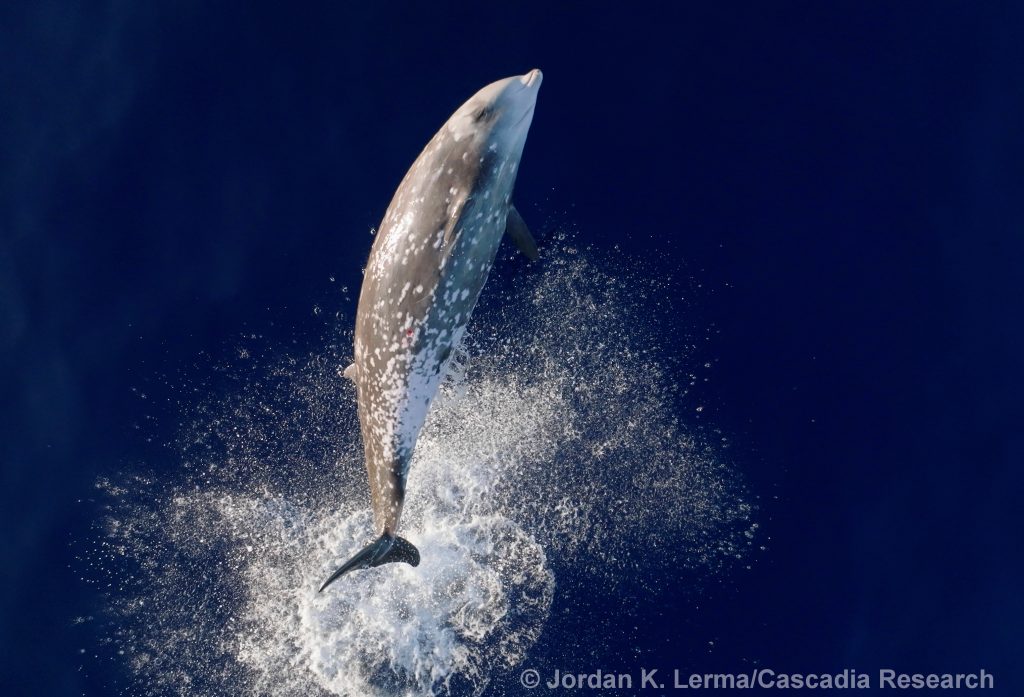
We are planning a field effort off Kona starting October 28th or 29th and going through November 16th or 17th. We have two primary goals for this project. With funding from the Pacific Islands Fisheries Science Center, we hope to find and work with false killer whales (from both the endangered resident population and the offshore "pelagic" population), obtaining identification photos, collecting biopsy samples, and hopefully getting one or more LIMPET satellite tags deployed. We are also working with Marine Ecology and Telemetry Research (MarEcoTel) on a project funded by the U.S. Navy's Living Marine Resource Program for the development and deployment of LIMPET tags with a new attachment system, called an "elastic anchor". We hope to deploy several of these tags on short-finned pilot whales. As usual, we'll also be working with all other species of whales and dolphins we encounter. We use a variety of methods to accomplish our goals, including photo-identification, collection of biopsy or eDNA samples, drone photogrammetry, and deployment of LIMPET satellite tags. Our primary field crew for the project will be Colin Cornforth, Jordan Lerma, Mark Mohler, and Robin Baird, as well as Russ Andrews of MarEcoTel, and we expect to have a number of volunteers and other crew assisting with the work.
This fall is also shaping up to be a relatively strong El Niño, and we are very interested to see how that many influence whales and dolphins, as well as seabirds, off the island. If you are on the water off Kona during this period, and see any unusual species (e.g., pygmy killer whales, sperm whales, killer whales, false killer whales), please let us know!
End of project update
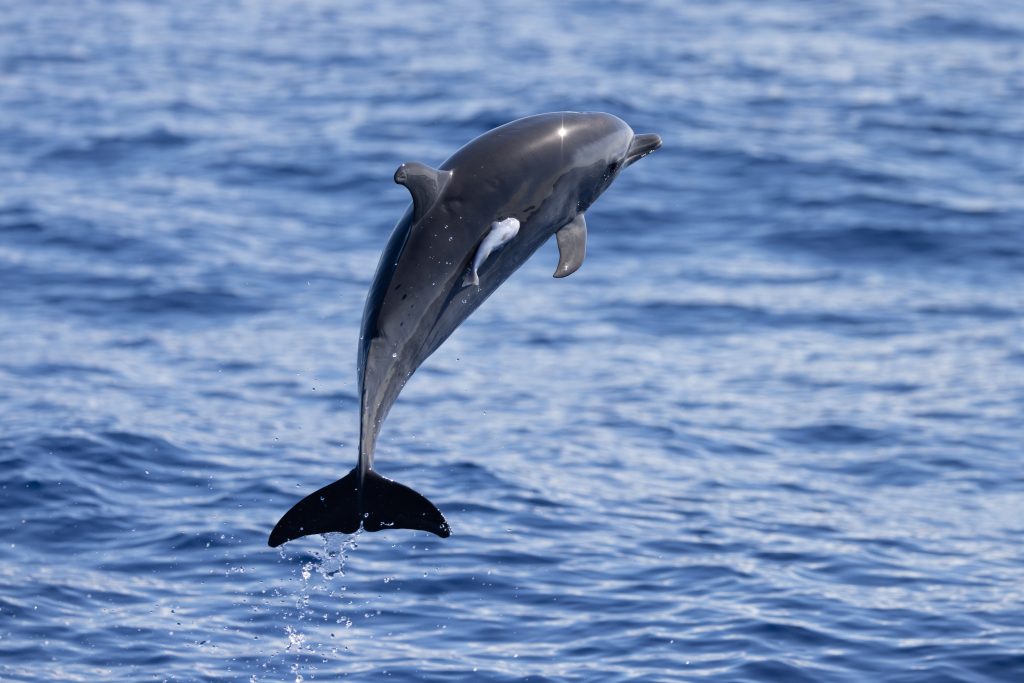
Our last day on the water was November 16th. Over the last three weeks were spent 17 days on the water, covered 1,957 kilometers, had 37 encounters with 11 different species of cetaceans (and one Hawaiian monk seal), took 44,266 photos, deployed 11 satellite tags, collected 16 samples (biopsies, eDNA, and squid), and obtained drone footage from three species.
A lot of big accomplishments this trip. We re-located the pelagic false killer whales tagged in September, collected two biopsies, and tagged three individuals - two of the tags were depth-transmitting tags, and we've obtained the first dive data for the pelagic population! We also tagged four Cuvier's beaked whales (in three different groups). We'd previously obtained movement data from 10 tagged Cuvier's in Hawai'i, and the last time was in 2015, so the data obtained will be a substantial increase in what we know about movements of individuals in this population. As well as being able to examine how the four individuals may have (or may not have) interacted over time, we also obtained dive data from one of the four. From the Cuvier's, we also collected three eDNA samples and one biopsy sample. Amazingly enough, Cuvier's beaked whales were the second-most frequently encountered species this trip, with seven sightings - the only species seen more often were short-finned pilot whales, and we had more than twice as many sightings of them than the next most frequently encountered species - rough-toothed dolphins. We also had good success with deployments of LIMPET satellite tags with the new elastic anchor system on short-finned pilot whales - we are currently tracking three different individuals and are hoping for long deployments as well as lots of re-sightings to be able to assess how these tags perform compared to the standard attachment system.
We need to thank a lot of people - Captain Zodiac made the work possible, and we want to thank Colin Cornforth, Cory Fults, Jason Lafferty, and Brenna Lonergan. Jordan Lerma, Mark Mohler, and Russ Andrews were all critical to the success of the project. We also had help from a lot of different volunteers - Andrew Aggergaard, Andrea Buskirk, Lisa Canale, Katie Cartee, Dustin Chin, Cynthia Hankins, Benji Jones, Megan Lamson, Sarah Milisen, Olivia Miller, Jana Phipps, Susan Rickards, Gabrielle Robinson, Alyssa Rodrigues, Ryan Sack, Alex Teodorescu, Jarett Trendel, Chris Warlow, Margaret Whitlock, and Patrick Zisk.
November 13th update
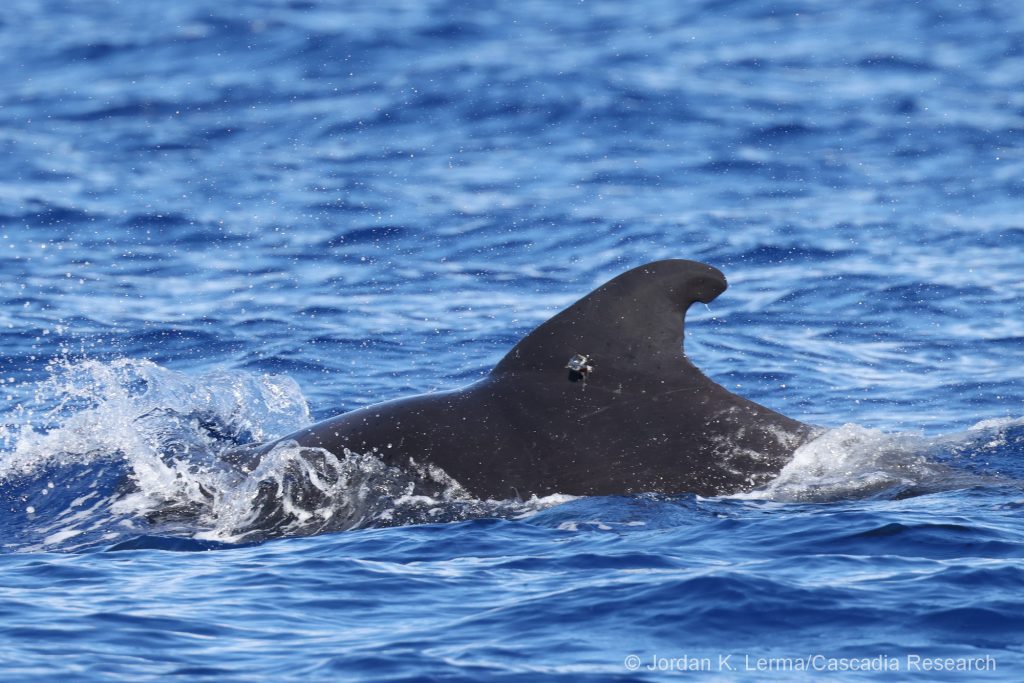
Although we were originally planning on taking one (or two) days a week on land to catch up, today was day 9 (in a row), so we are a bit behind. Today we successfully deployed a LIMPET tag on a large subadult short-finned pilot whale with a new "elastic anchor" attachment system designed by Russ Andrews from Marine Ecology and Telemetry Research. We hope to get follow-up photos of this individual over the next few months, so if you are on the water off Kona and see pilot whales, please take (and contribute) photos?
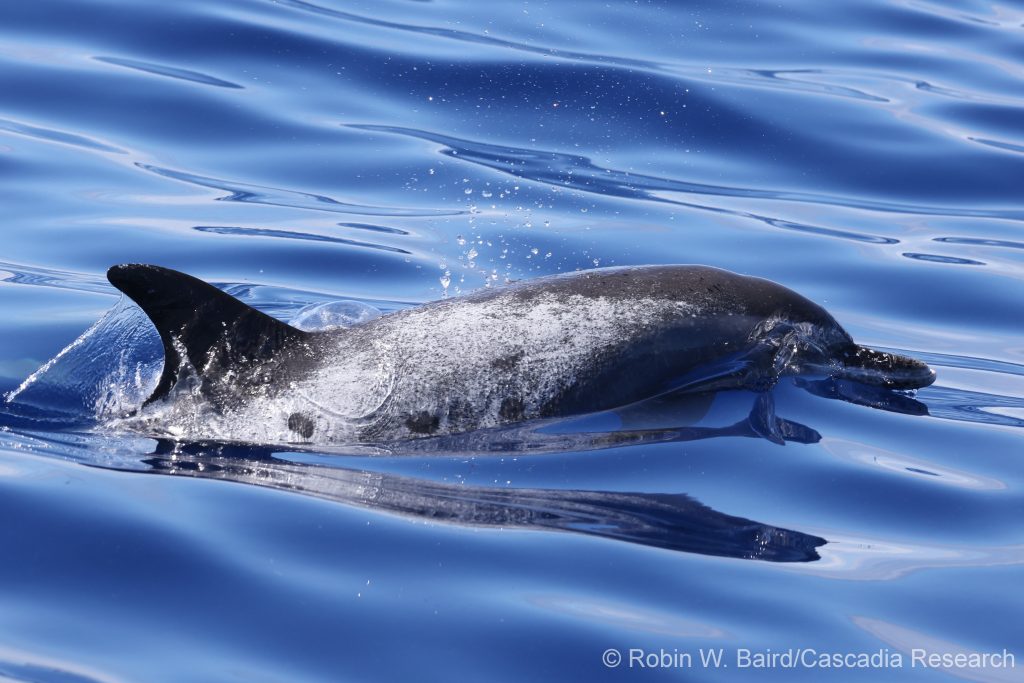
On November 12th we encountered a group of pantropical spotted dolphins that included an individual with very unusual pigmentation. There is always a possibility in such cases that this individual is a hybrid, so we collected a small skin/blubber biopsy sample for genetic analyses. Later in the day we also encountered another group of Cuvier's beaked whales, and were able to deploy a depth-transmitting Fastloc-GPS tag, our fourth tag deployed on a Cuvier's beaked whale this trip.
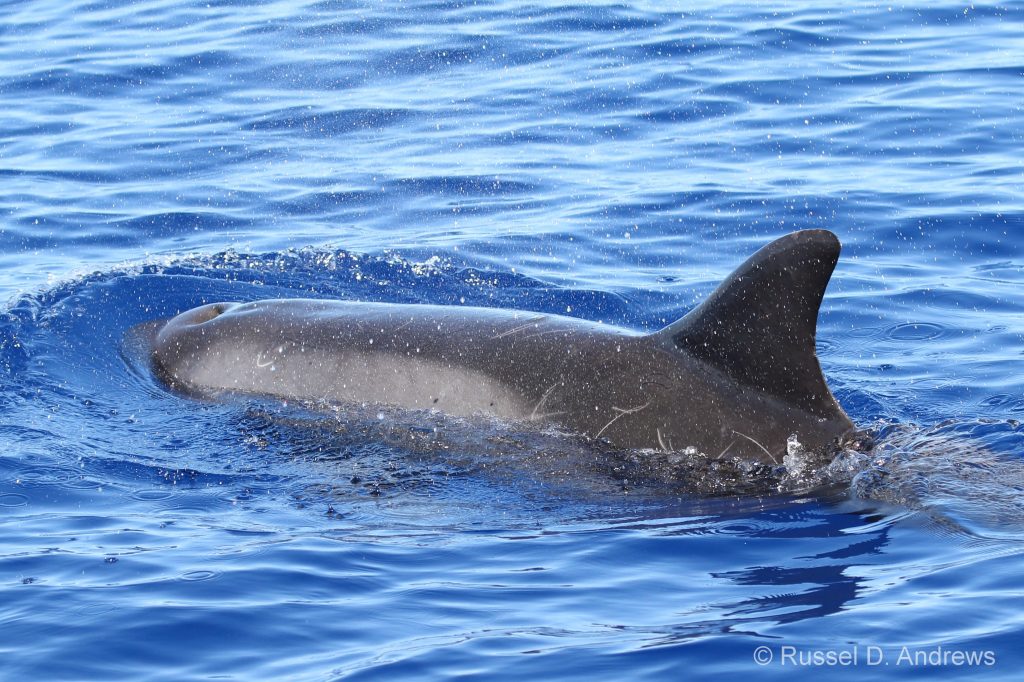
We also encountered a group of pygmy killer whales, our first encounter with this species off the island since November 2021. We were able to get good identification photos of the individuals as well as one eDNA sample from the group.
November 9th update
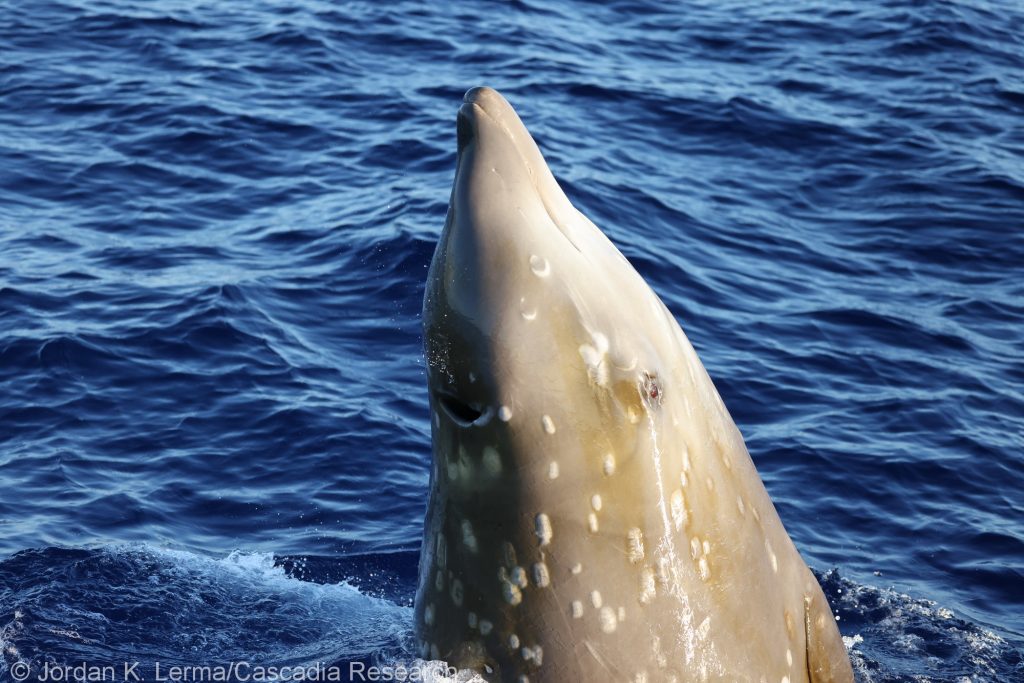
November 9th was a very productive day. We encountered a group of three Cuvier's beaked whales early in the morning (at 7:03 AM), including one curious individual. This photo is of this adult female spyhopping in front of the boat. We thought the whales had dove and were sitting motionless in the water, when this whale spyhopped right off the bow, and then circled the boat! As well as the lovely photos and identifications of the individuals, we also obtained an eDNA sample of the group.
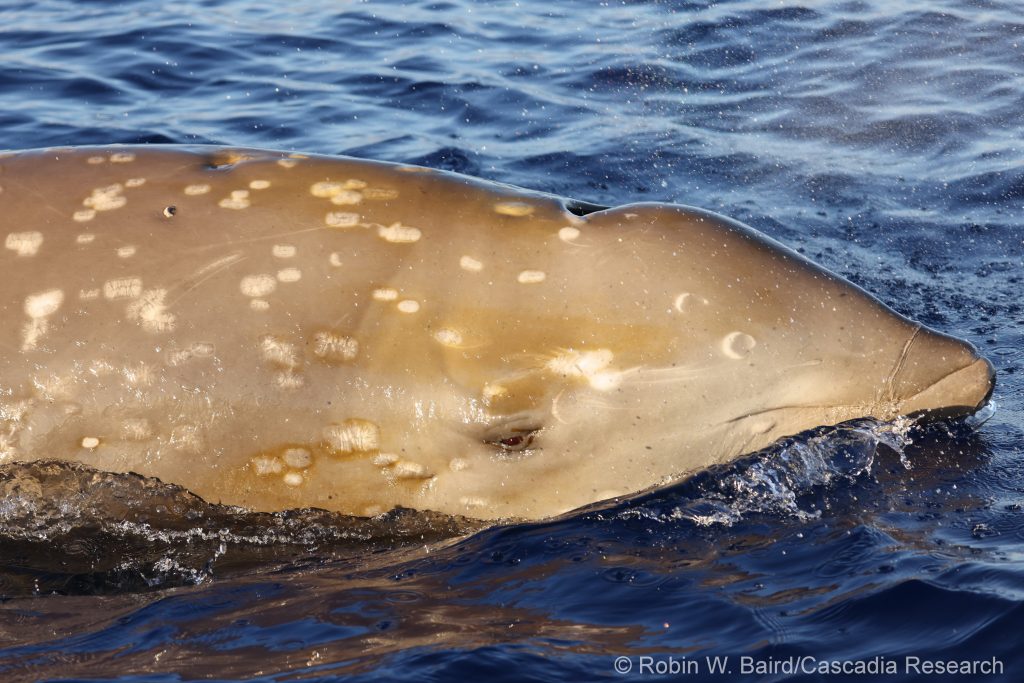
This is the same adult female as she circled the boat. All the white oval scars are from cookie-cutter shark bite wounds. The copper-colored sheen are diatoms, that grow on the skin.
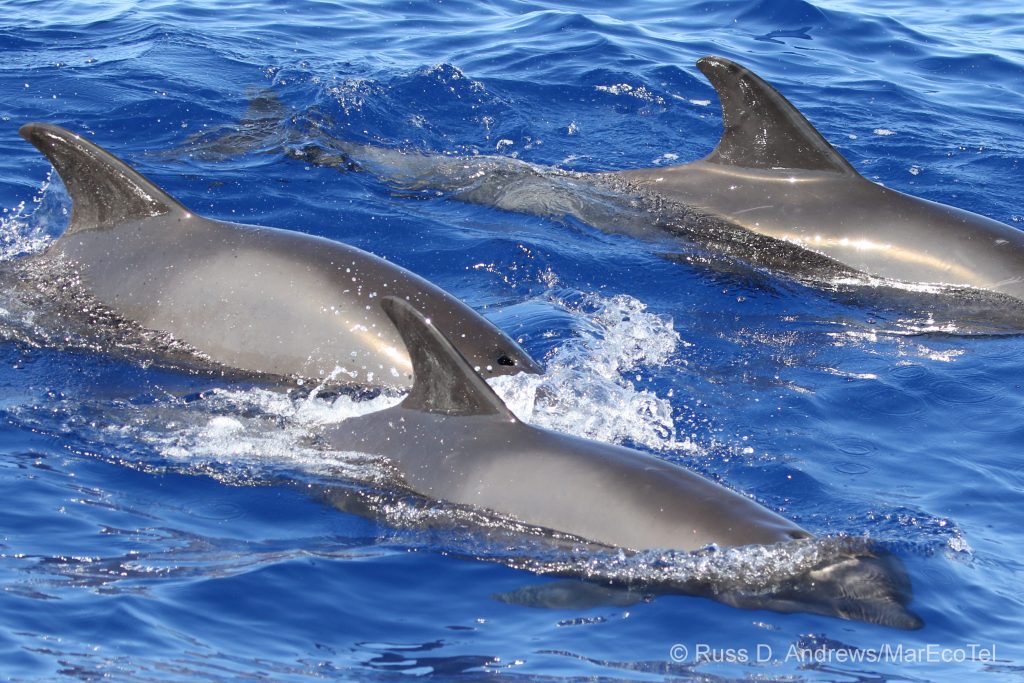
We also encountered a large group (~225 individuals) of melon-headed whales, our first encounter this trip.
November 8th update
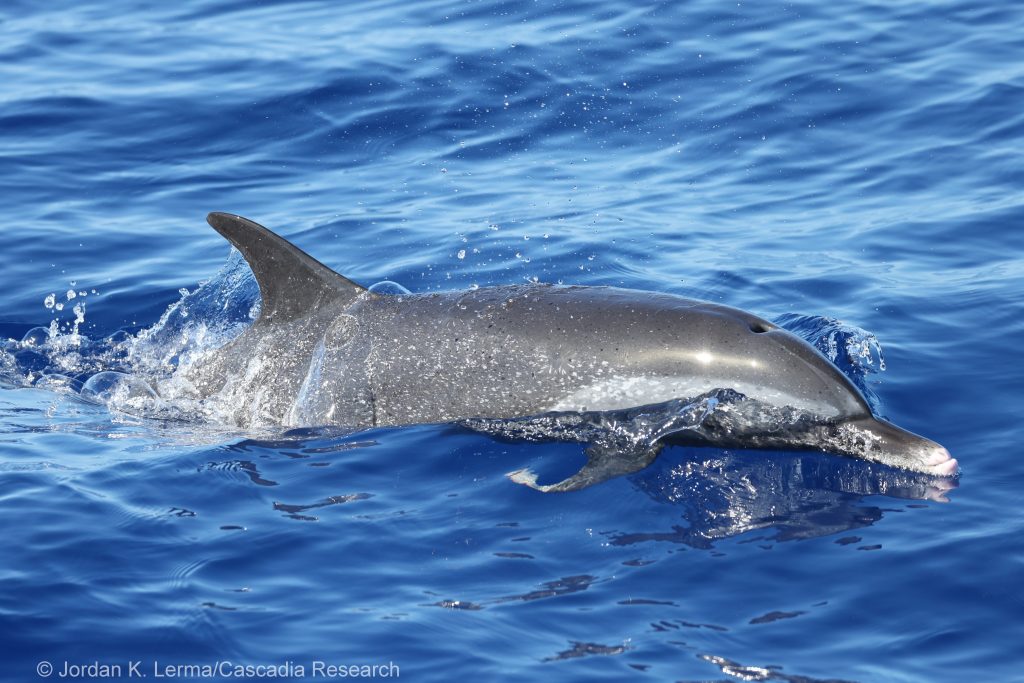
The last few days have alternated between very productive, and very, very quiet. On November 3rd we encountered a pair of Cuvier's beaked whales and were able to deploy a LIMPET satellite tag (one that records dive behavior) and collect a biopsy sample, and we also obtained drone footage (and an eDNA sample) of dwarf sperm whales. This was followed by several days with just one or no sightings of cetaceans! This pantropical spotted dolphin, seen November 8th, was part of only the second group of this species we've seen this trip.
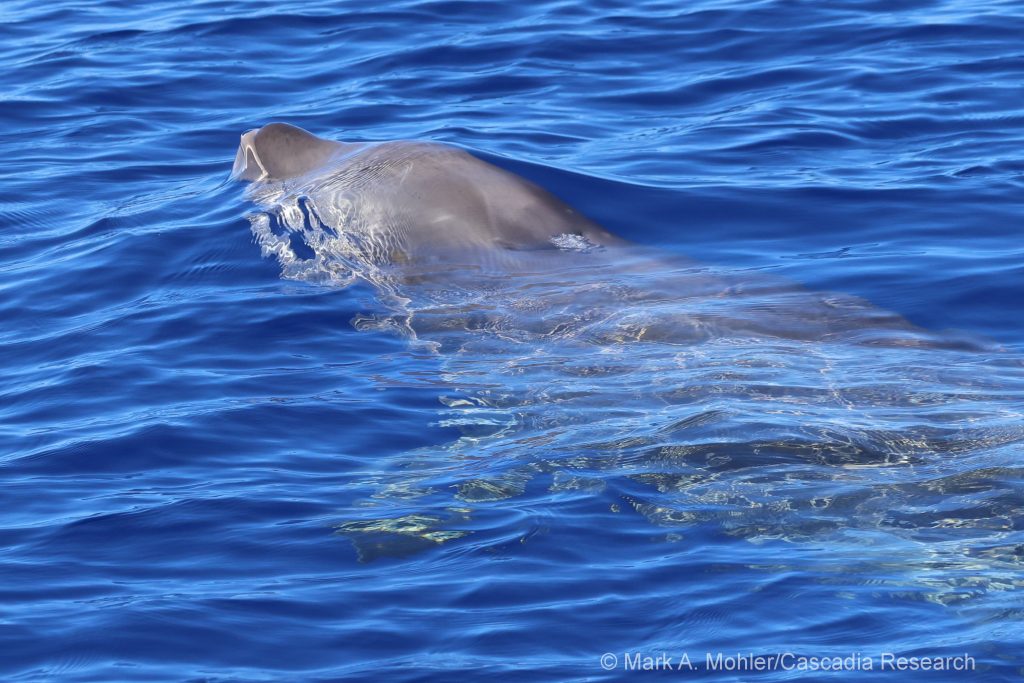
November 2nd update
Our most exciting encounter of the day was definitely a group of three Cuvier's beaked whales. First seen breaching and taillobbing in the distance, as we approached the group one individual, a juvenile, closely approached the boat. Although we were set up for satellite tagging, we did not get close enough, although we did collect two eDNA samples, got drone laser photogrammetry images of two of the three individuals, and got ID photos of all three. There is a small resident population of this species off the island, and we expect that both of the adults are individuals that have been previously documented off the island.
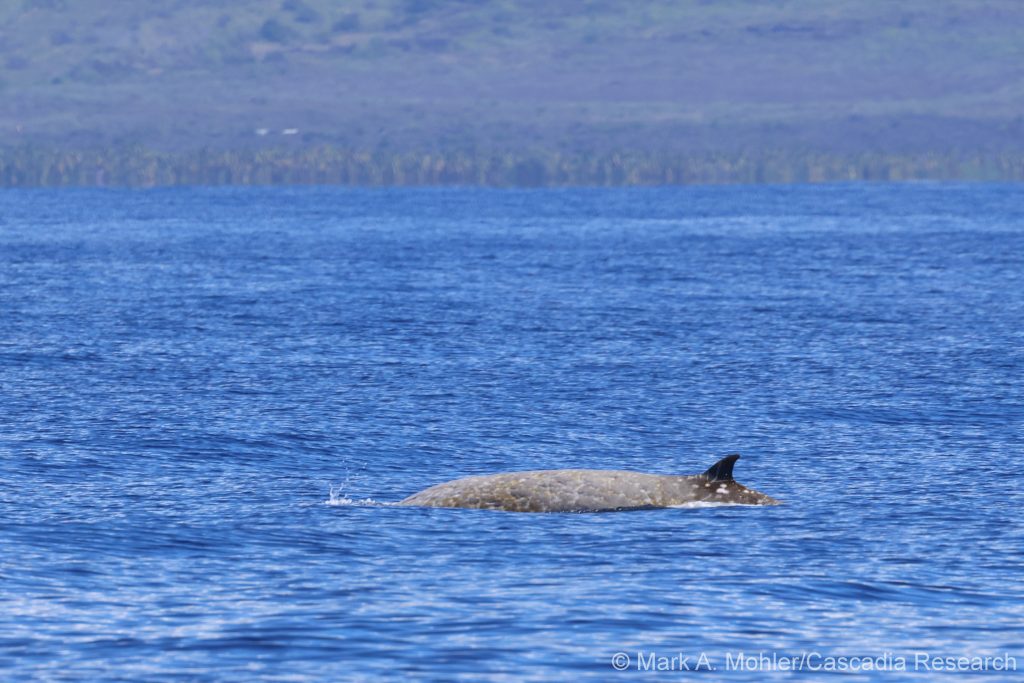
As they age, Cuvier's beaked whales acquire white oval scars from bites from cookie-cutter sharks, and for males, they also acquire lots of linear scars from fighting with other males. This is an older adult male, which also tend to get whiter with age.
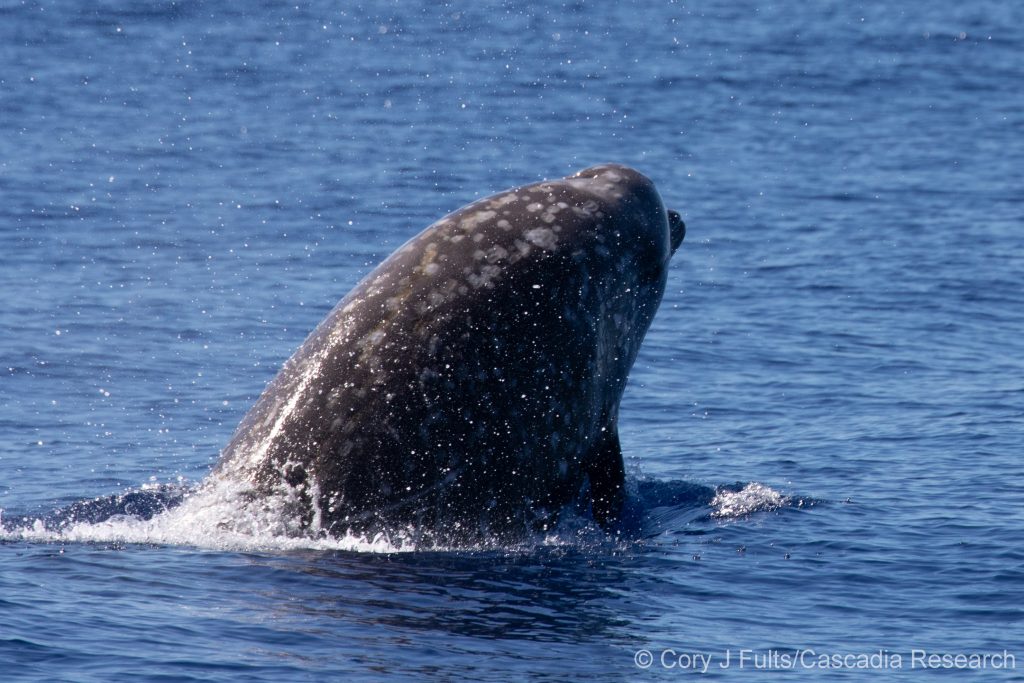
The key to our success at sampling or tagging beaked whales is when in their dive cycle we first encounter the group (e.g., just after coming up from a long dive, when they may be at the surface a long time, versus just before they go down on a long dive, which may last 1-2 hours). Prior to these long dives, we often see what we call "terminal lunges", a last breath before they descend far beneath the surface.
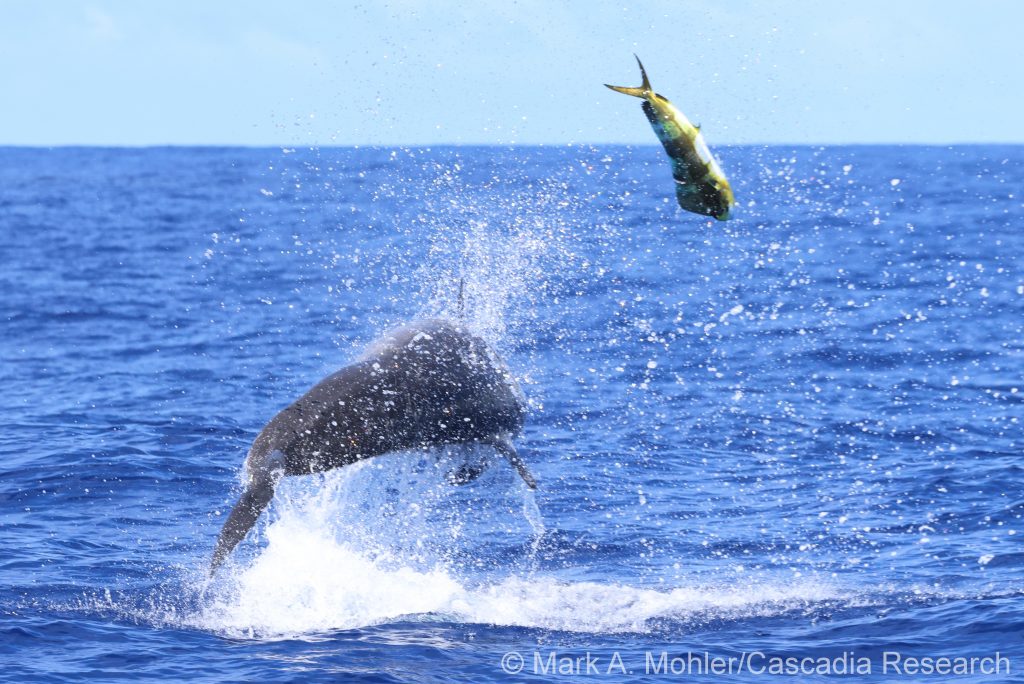
October 31st update
Today was a good day on the water. We were able to find and work with our highest priority species for the trip, false killer whales! We encountered the group using information from satellite tags deployed on two individuals in September 2023 - this group is from the rarely-encountered "pelagic" stock of false killer whales. In addition to getting identification photos of about 10 individuals, we collected two skin/blubber biopsy samples (that will be used for genetics as well as other studies), and deployed three additional satellite tags on the group.
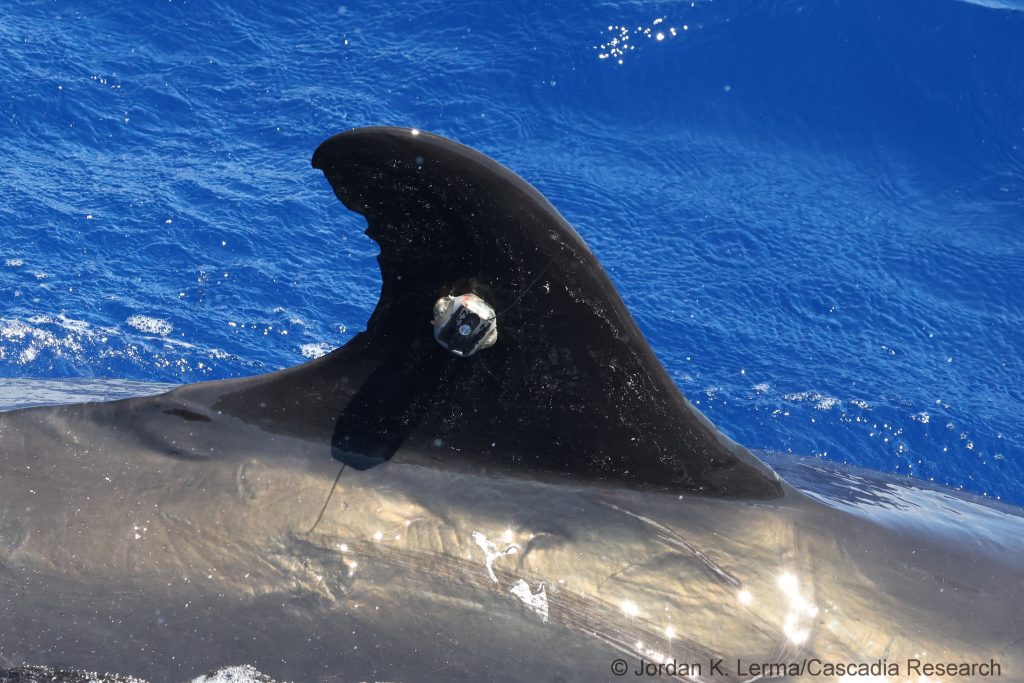
One of the satellite-tagged individual false killer whales. This tag is an Argos location-only tag (a SPOT6 tag made by Wildlife Computers), but the other two tags deployed also record Fastloc®-GPS locations, as well as dive data. While we've obtained dive data from both Northwestern Hawaiian Island false killer whales, and false killer whales from the endangered main Hawaiian Islands population, these are the first dive tags deployed on individuals from the Hawai'i pelagic stock.
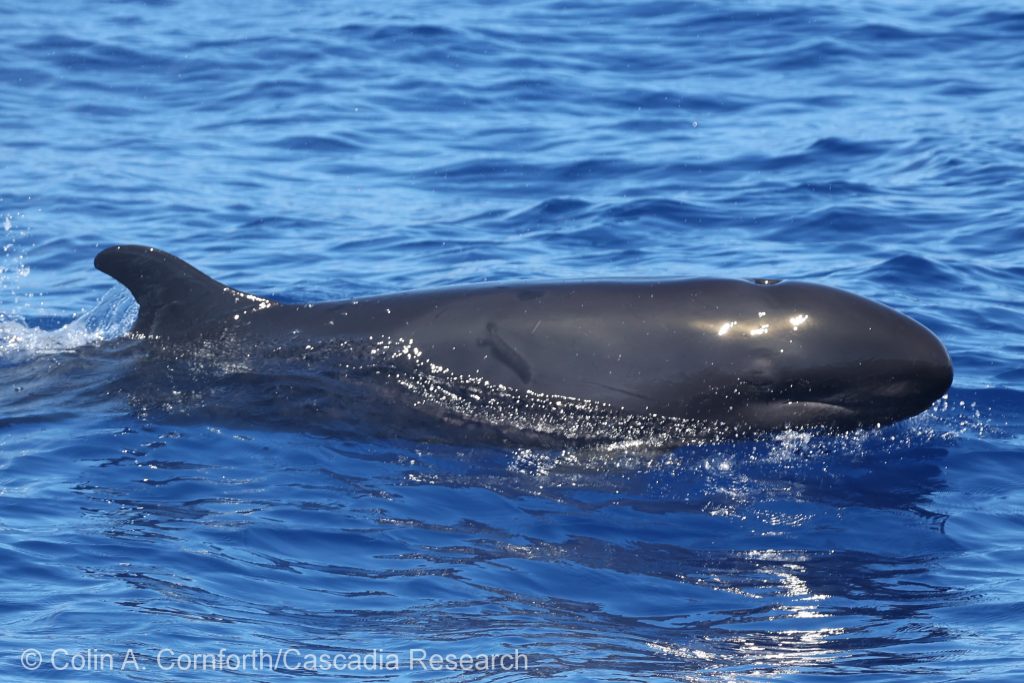
Groups from the Hawai'i pelagic stock are encountered much less frequently than those from the endangered main Hawaiian Islands insular population - prior to our September encounters this year, the last time we've encountered individuals from this population was in 2020. As a result, the photos used to identify individuals are critically important to understanding social organization in this population.
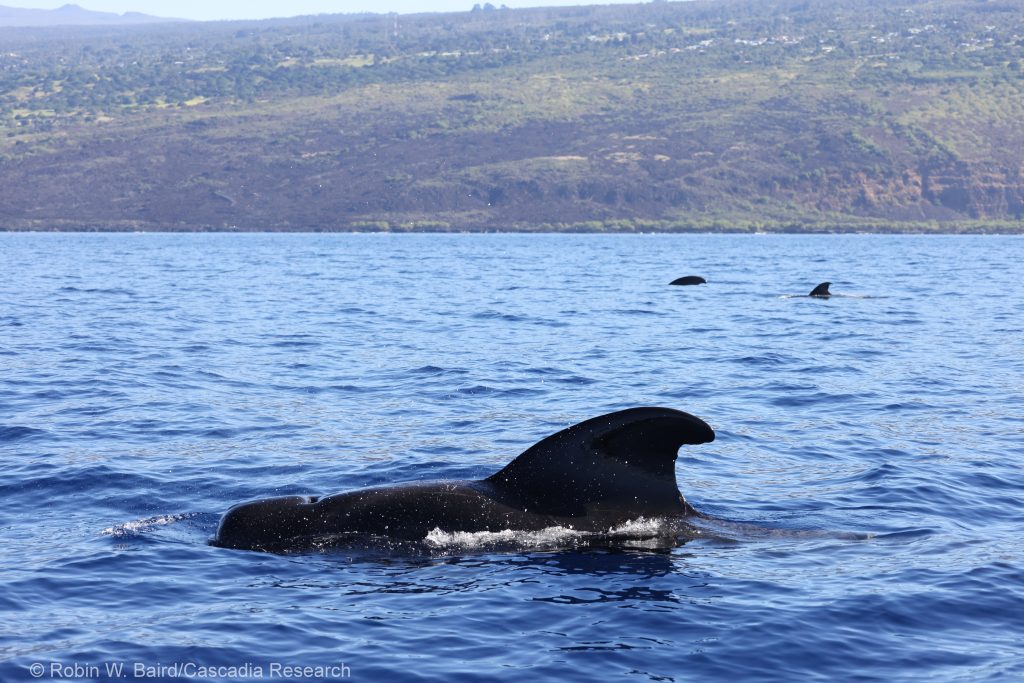
October 29, 2023 update
Today was our first day on the water. We had relatively calm seas for just for the first four hours of the morning, and sightings of three different species. Our encounters included two groups of short-finned pilot whales, and we obtained good identification photos of about 30 individuals, as well as a fairly large group (22 individuals) of rough-toothed dolphins. We were very excited to find a group of three Blainville's beaked whales, one of our priority species for the trip. While we were able to get identification photos of all three individuals (and recognized one as an island-resident), we found the group just as they were heading down on a long foraging dive. While we waited an hour in the hopes of re-locating the group, while we were waiting the winds picked up and the whitecaps made it impossible to re-locate them. A promising start to the trip!
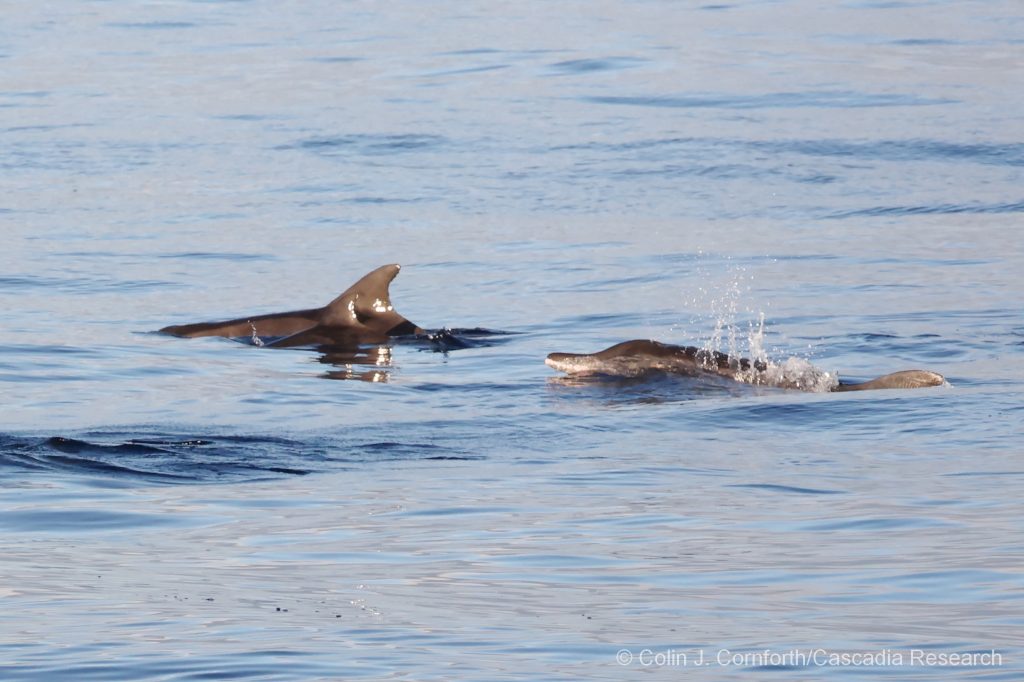
Normally rough-toothed dolphins off Kona are pretty evasive, but this group was preoccupied with foraging and we were able to get ID photos of about 15 individuals from the group.
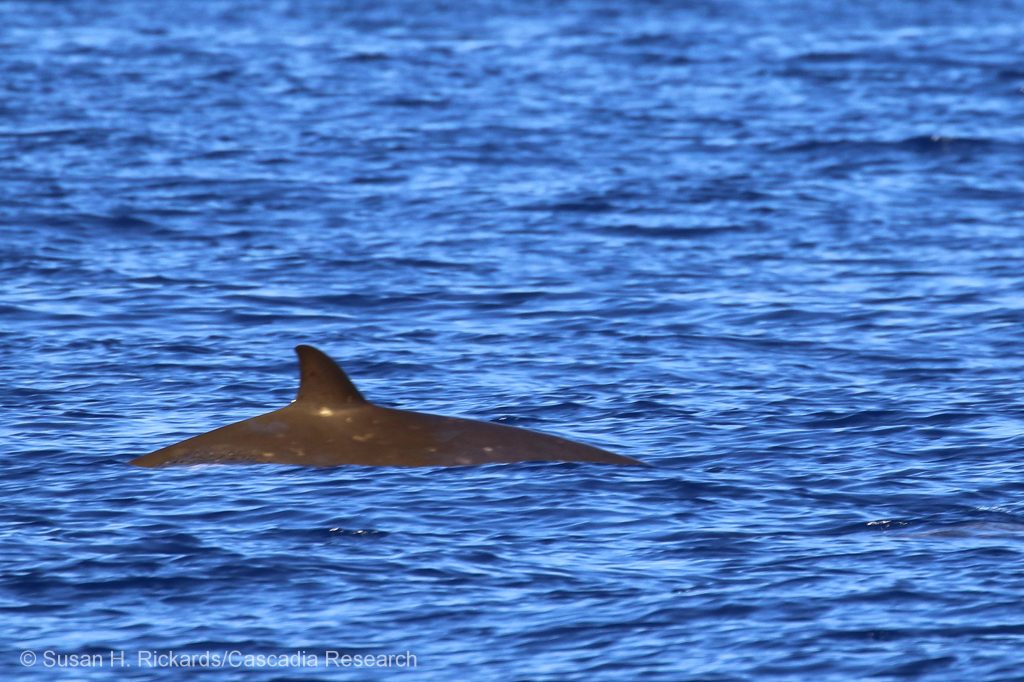
One of the three Blainville's beaked whales photographed on October 29th, 2023. The faint white scars visible are from cookie-cutter shark bites, and allow us to identify individuals
Photos on this page were taken under NMFS Scientific Research Permit No. 26596. Please contact Robin Baird (rwbaird (at) cascadiaresearch (dot) org) for more information.